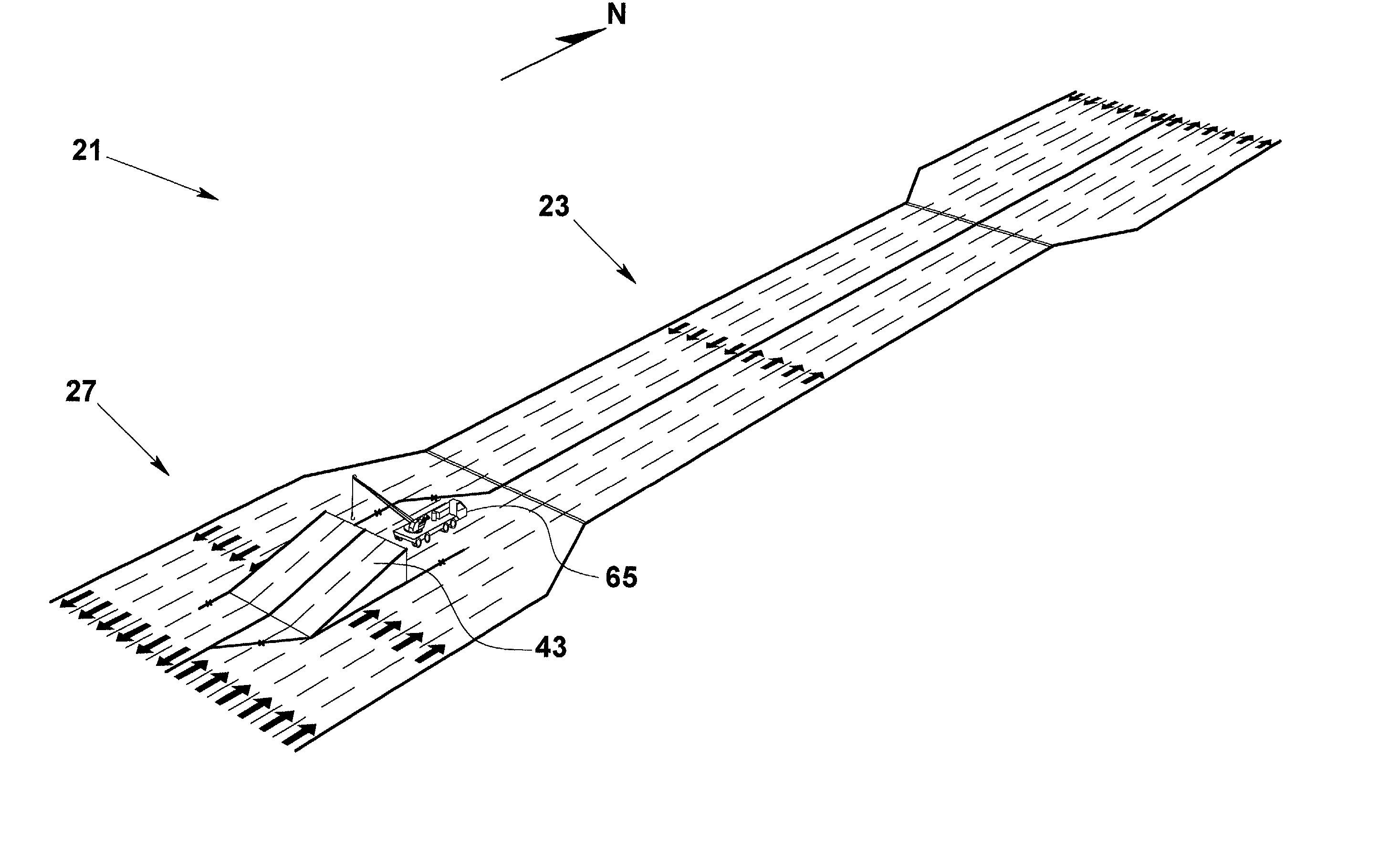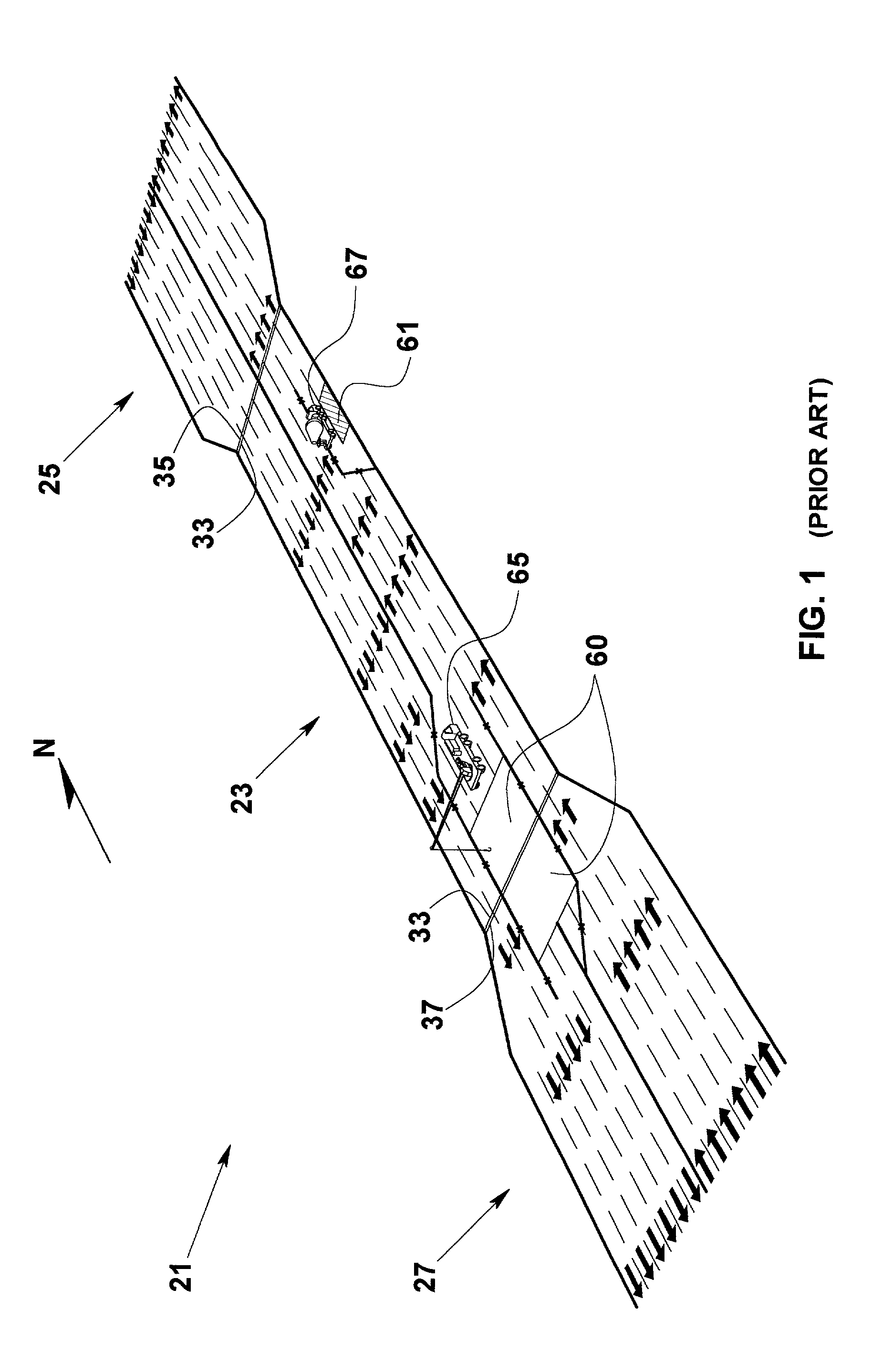Method and device for reconstructing existing bridges and highways with minimal disruption of traffic
- Summary
- Abstract
- Description
- Claims
- Application Information
AI Technical Summary
Benefits of technology
Problems solved by technology
Method used
Image
Examples
Embodiment Construction
[0087] In the first example, FIG. 1 (PRIOR ART) shows a perspective view of an existing roadway 21 running north-south. Roadway 21, which is governed by a transportation authority, includes an existing bridge roadway 23, limited by existing bridge roadway limit lines 33. Roadway 21 also includes an existing north approach roadway 25, limited by an existing north approach roadway limit line 35, and an existing south approach roadway 27, limited by an existing south approach roadway limit line 37. Travel lane marking lines delineate existing northbound travel lanes and existing southbound travel lanes. The northbound and southbound travel lanes are separated at a median and limited on sides by roadway traffic barriers.
[0088] Existing traffic on roadway 21 fluctuates between periods of peak traffic, from early morning to late afternoon, and periods of off-peak traffic, during night hours. While average daily traffic requires four travel lanes in each direction, peak traffic requires si...
PUM
 Login to View More
Login to View More Abstract
Description
Claims
Application Information
 Login to View More
Login to View More - R&D
- Intellectual Property
- Life Sciences
- Materials
- Tech Scout
- Unparalleled Data Quality
- Higher Quality Content
- 60% Fewer Hallucinations
Browse by: Latest US Patents, China's latest patents, Technical Efficacy Thesaurus, Application Domain, Technology Topic, Popular Technical Reports.
© 2025 PatSnap. All rights reserved.Legal|Privacy policy|Modern Slavery Act Transparency Statement|Sitemap|About US| Contact US: help@patsnap.com



